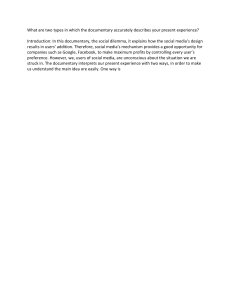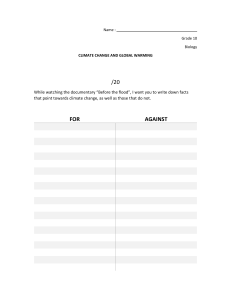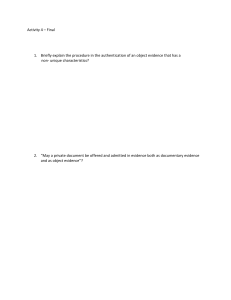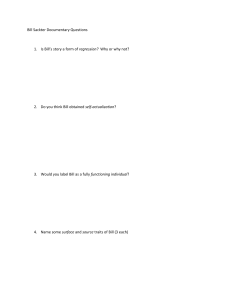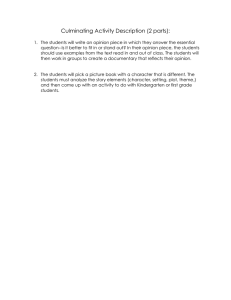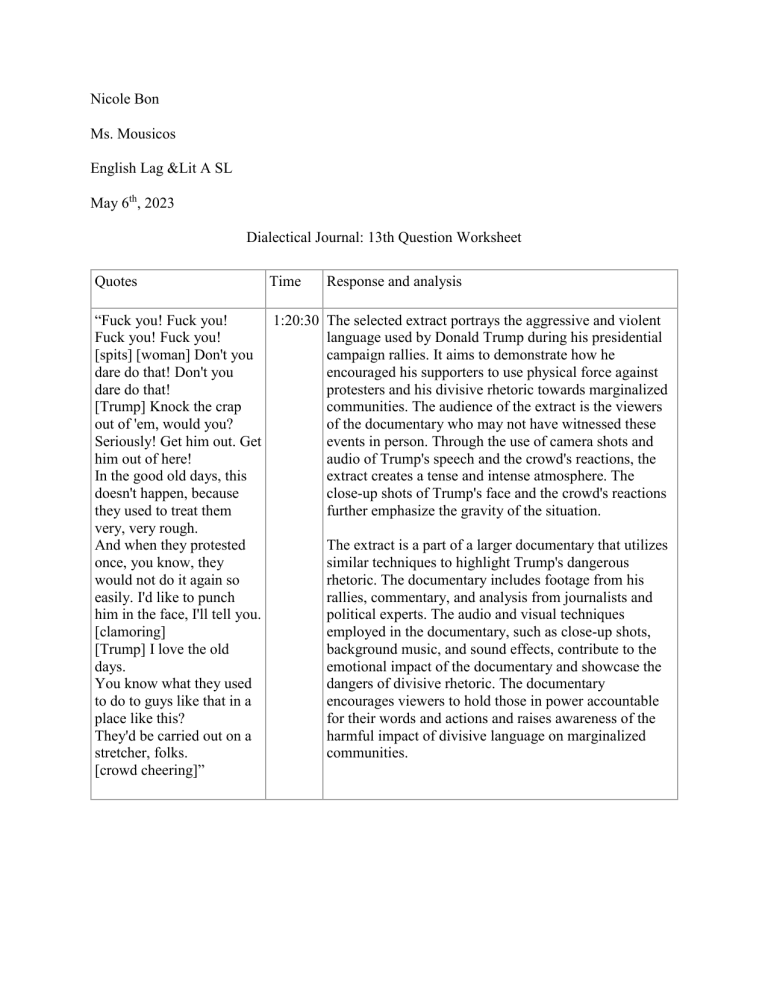
Nicole Bon Ms. Mousicos English Lag &Lit A SL May 6th, 2023 Dialectical Journal: 13th Question Worksheet Quotes Time Response and analysis “Fuck you! Fuck you! 1:20:30 The selected extract portrays the aggressive and violent Fuck you! Fuck you! language used by Donald Trump during his presidential [spits] [woman] Don't you campaign rallies. It aims to demonstrate how he dare do that! Don't you encouraged his supporters to use physical force against dare do that! protesters and his divisive rhetoric towards marginalized [Trump] Knock the crap communities. The audience of the extract is the viewers out of 'em, would you? of the documentary who may not have witnessed these Seriously! Get him out. Get events in person. Through the use of camera shots and him out of here! audio of Trump's speech and the crowd's reactions, the In the good old days, this extract creates a tense and intense atmosphere. The doesn't happen, because close-up shots of Trump's face and the crowd's reactions they used to treat them further emphasize the gravity of the situation. very, very rough. And when they protested The extract is a part of a larger documentary that utilizes once, you know, they similar techniques to highlight Trump's dangerous would not do it again so rhetoric. The documentary includes footage from his easily. I'd like to punch rallies, commentary, and analysis from journalists and him in the face, I'll tell you. political experts. The audio and visual techniques [clamoring] employed in the documentary, such as close-up shots, [Trump] I love the old background music, and sound effects, contribute to the days. emotional impact of the documentary and showcase the You know what they used dangers of divisive rhetoric. The documentary to do to guys like that in a encourages viewers to hold those in power accountable place like this? for their words and actions and raises awareness of the They'd be carried out on a harmful impact of divisive language on marginalized stretcher, folks. communities. [crowd cheering]” Quotes Time Response and analysis 1:13:27 The documentary utilizes various visual and textual techniques to shed light on the global issue of racial discrimination and unequal treatment within communities. The extract in question highlights the story of Browder, who took his own life due to the insurmountable challenges he faced as a result of his race. Through the use of an indirect gaze, the film tells a story of faith, future, and destiny, indicating the harsh reality faced by those subjected to systemic racism. Additionally, the monochromatic filter used in the scene highlights Browder's skin tone, emphasizing the deeprooted societal issue of discrimination that exists in our world. The use of text in the subtitle further adds depth to the story by providing the audience with crucial information about the situation. The caption implies that Browder's decision to take his own life was a result of the challenges he faced as a person of color, suggesting the toll that discrimination can take on individuals. The tone and expression on Browder's face further emphasize this point, as he appears exhausted and emotionless, conveying the struggles he had to endure. Furthermore, the reference to the color of his eyes and skin serves as a subtle reminder of the systemic racism that exists in society and the unequal treatment faced by people of color. Through these techniques, the documentary effectively highlights the impact of racial discrimination on individuals and communities, encouraging viewers to take action to address this global issue. Throughout the documentary, the filmmakers employ various visual and textual techniques to convey their message about the global issue of racial discrimination and unequal treatment. From the use of indirect gaze to the monochromatic filter, each technique is strategically employed to emphasize the message and evoke an emotional response from the audience. The text in the subtitles plays a crucial role in providing the audience with important information about the people and situations depicted in the film, shedding light on the struggles faced by those subjected to discrimination. By using these techniques, the documentary aims to raise awareness about the issue of racial discrimination and encourage viewers to take action to address this pervasive problem in our society. Overall, the documentary provides a powerful commentary on the issue of racial discrimination and its impact on individuals and communities, challenging viewers to reflect on their own beliefs and attitudes and take steps to promote equality and justice. Quotes Time Response and analysis 57:34 The extract highlights the issue of systemic racism and the dehumanization of Black and Latino individuals. The use of the dogs and the small size of the cage emphasizes the limited space and resources allocated to people of color, with the caption's assertion that even pets would not be kept in such conditions underscoring the low social status of Black people within America's system. This scene seeks to draw attention to the deep-seated racial inequality that persists in many parts of the world. The use of powerful imagery and captions is a common technique throughout the entire documentary. Each scene seeks to highlight different aspects of racial inequality and injustice, using various visual and auditory techniques to evoke emotional responses from the audience. From the use of archival footage to interviews with victims of police brutality, the documentary draws attention to the deepseated racism that continues to plague societies around the world. The message is clear: there is an urgent need to address systemic racism and work towards greater equality for all people, regardless of their race or ethnicity. Through its powerful storytelling, the documentary makes a compelling case for change and challenges audiences to take action towards a more just and equitable world. Quotes Time Response and analysis 1:18:06 This extract from the documentary highlights the issue of systemic racism and the unjust treatment of Black people through the use of music. The song shown in this scene is sung by Black individuals speaking to their own experiences and their message is made more powerful by the fact that it comes from within the community affected by these injustices. The words "In Chains" with a big cross on chains suggest that Black people have been unfairly incarcerated and punished for crimes they did not commit. The lyrics "You put the shame on us" are a protest against the government's policies of criminal justice, which disproportionately harm Black communities. By framing this issue through music and personal experience, the documentary brings attention to the emotional and psychological toll of racism and the importance of listening to the voices of those affected. Throughout the documentary, similar techniques are used to drive home the message of the impact of systemic racism and the need for change. The use of personal stories, music, and artwork helps to humanize the issue and show how it affects individuals and communities. The documentary also draws attention to the historical roots of racism and the ways in which systemic oppression has been perpetuated over time. By connecting these individual stories and experiences to the broader history of racism and inequality, the documentary highlights the systemic nature of the problem and the need for systemic solutions. Overall, the documentary uses a variety of techniques to engage the audience emotionally and intellectually and to call attention to the urgent need for change in our society.
